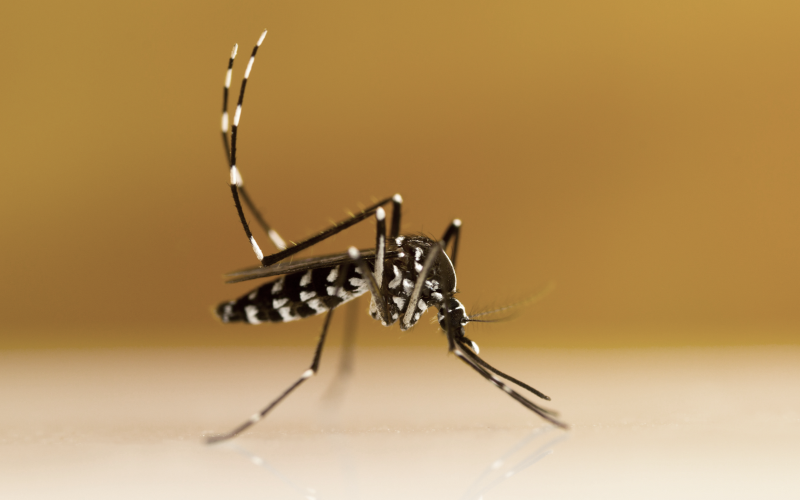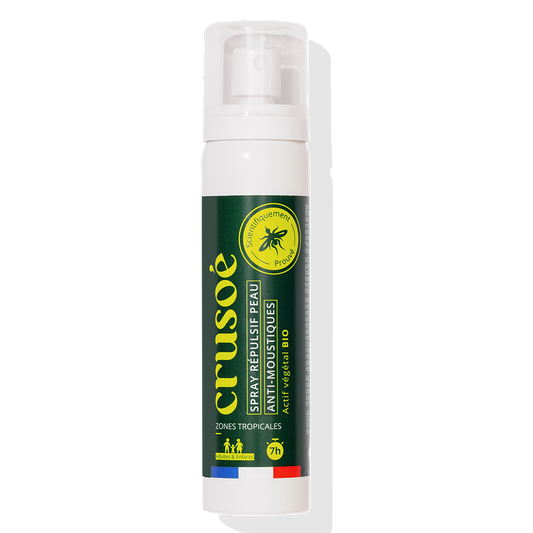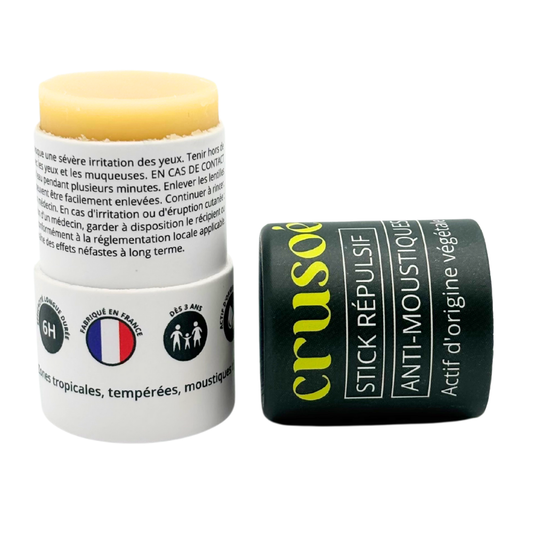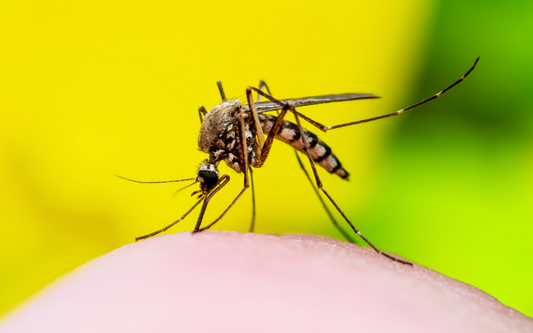Many mosquitoes, around sixty different species, have always been present in metropolitan France. However, the rise of globalization and international trade has led to the uncontrolled introduction of new species of non-European mosquitoes . Mainly imported by the transport of tires, four species* of mosquitoes of the genus Aedes have been identified on French soil, including the famous Aedes albopictus , commonly known as " tiger mosquito " Only the latter has not been eradicated and has survived by adapting to European climatic conditions and our urban lifestyles. 1
*Aedes albopictus, Aedes atropalpus, Aedes japonicus and Aedes triseriatus.
In fact, the tiger mosquito, originating from Southeast Asia , is acclimatized to tropical regions. However, since its first appearance in metropolitan France, in the Alpes Maritimes in 2004, he has continued to expand his presence (Figure 1) and colonized 64 departments of the metropolitan territory in 2021 (Figure 2). 2
The French situation is only a reflection of the same global phenomenon, since in about twenty years, the tiger mosquito is present on all continents, except Antarctica. The globalization of its presence has earned it the classification as one of the most invasive species in the world!

FIGURE 1: Map of French departments where the tiger mosquito is present, showing its progression between 2003 and 2023.
In addition to the skin irritation caused by the bite, female mosquitoes are capable of transmitting more than thirty viruses, bacteria and parasites . These are real disease vectors , the best known of which are chikungunya*, dengue fever*, yellow fever*, Zika virus disease*, malaria, and West Nile virus.
In the face of the public health threat and previous epidemics 3 of chikungunya and dengue fever, in Reunion Island and more recently in metropolitan France, a commission to combat the spread of the tiger mosquito in France was appointed to the National Assembly. This commission has also classified as " major health risk " the spread of this mosquito for the next decades.
*These four diseases can be transmitted by Aedes viruses, particularly the tiger mosquito.
For example, in metropolitan France in 2019, the Ministry of Solidarity and Health reported 674 cases of imported dengue fever and 9 indigenous cases, 57 cases of imported chikungunya and 12 indigenous cases, 6 cases of imported Zika virus disease and 3 indigenous cases.
The tiger mosquito and its "cousin" of the same genus, Aedes aegypti, which move at a speed of 150 km per year in Europe, will threaten nearly half of the world's population by 2050. 5 The cause is globalization exchanges of goods and people, which allowed a global dissemination, but also the strong adaptability of certain mosquito species ! 6 In fact, the eggs of tiger mosquitoes, now considered European, can withstand negative temperatures (between -7 and -12°C for 24 hours) while the eggs of tropical tiger mosquitoes cannot survive temperatures below zero. 1
In parallel, global warming and the rise in average winter temperatures only facilitate the establishment and survival of new species of non-European mosquitoes. This would be the case for Aedes aegypti , a mosquito of the same genus as the tiger mosquito and vector of the same diseases, which should reappear in southern Europe in 2030 and in France in the following years. 5
Given the tiger mosquito's adaptability in urban environments, The only realistic solution is the use of effective repellents , such as Crusoe.
Claire Grison - Biochemistry Engineer, Doctor of Organic Chemistry and Scientific Editor
References:
[1] SM Thomas, U. Obermayr, D. Fischer, J. Kreyling and C. Beierkuhnlein, Parasites & Vectors, 2012, 5, 100.
[2] Vert Eco (Source: French Ministry of Health), Map of the presence of the tiger mosquito (Aedes albopictus) in mainland France in 2003 and 2023, https://vert.eco/articles/en-dix-ans-le-moustique-tigre-a-colonise-la-france-metropolitaine.
[3] JM Medlock, KM Hansford, F. Schaffner, V. Versteirt, G. Hendrickx, H. Zeller and WV Bortel, Vector-Borne and Zoonotic Diseases, 2012, 12, 435–447.
[4] Ministry of Health and Solidarity (France), Mosquitoes as vectors of disease, https://solidarites-sante.gouv.fr/sante-et-environnement/risks-microbiological-physiques-et-chemicals/especes-nuisibles-et-parasites/moustiques .
[5] SJ Ryan, CJ Carlson, EA Mordecai and LR Johnson, PLOS Neglected Tropical Diseases, 2019, 13, e0007213.
[6] MUG Kraemer, RC Reiner, OJ Brady, JP Messina, M. Gilbert, DM Pigott, D. Yi, K. Johnson, L. Earl, LB Marczak, S. Shirude, N. Davis Weaver, D. Bisanzio, Perkins TA, Lai S, Lu X, Jones P, Coelho GE, Carvalho RG, Van Bortel W, Marsboom C, Hendrickx G, Schaffner F, Moore CG, Nax HH, Bengtsson L, E. Wetter, AJ Tatem, JS Brownstein, DL Smith, L. Lambrechts, S. Cauchemez, C. Linard, NR Faria, OG Pybus, TW Scott, Q. Liu, H. Yu, GRW Wint, SI Hay and N. Golding, Nat Microbiol, 2019, 4, 854–863.













